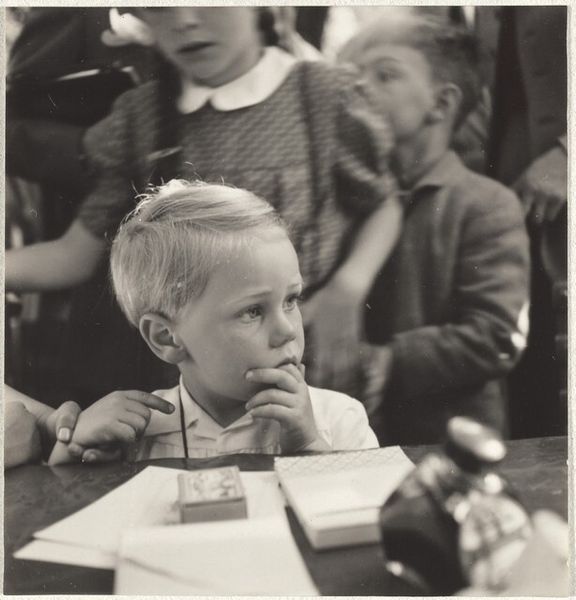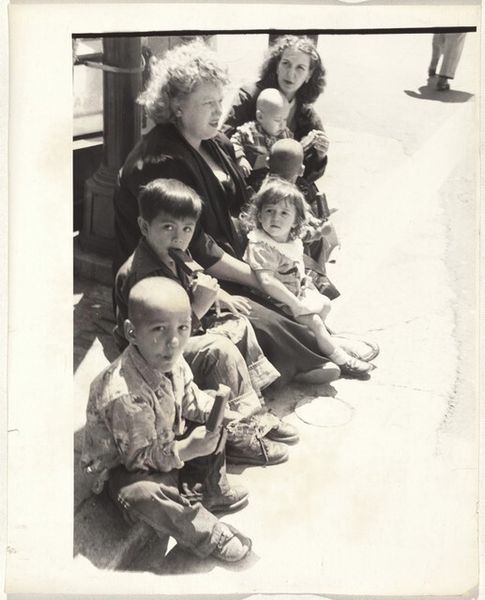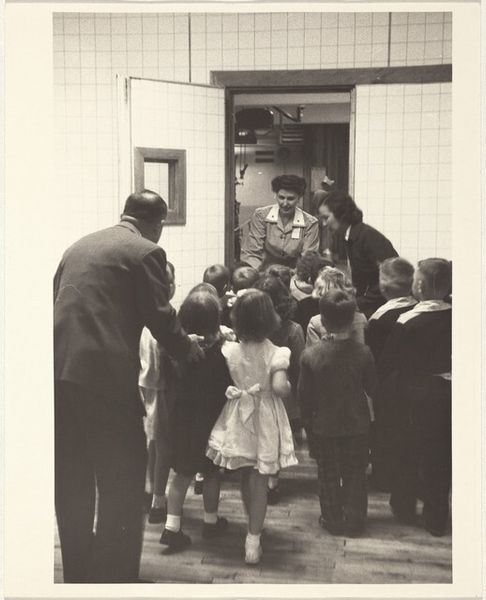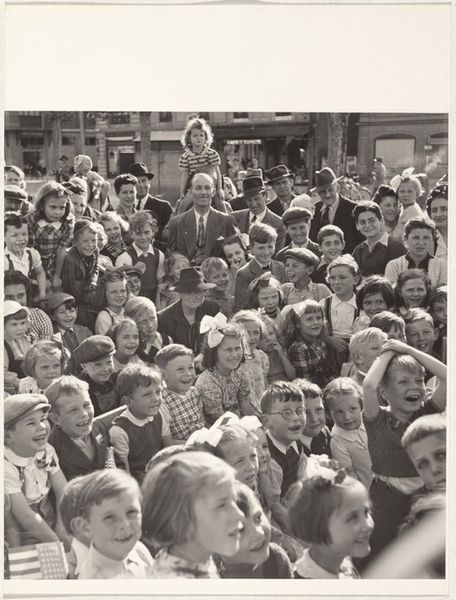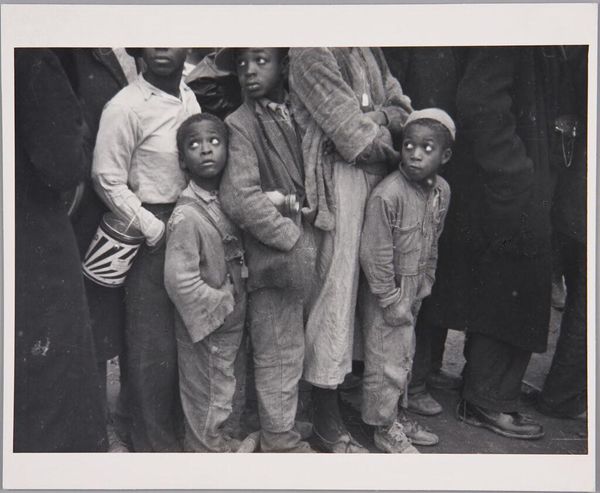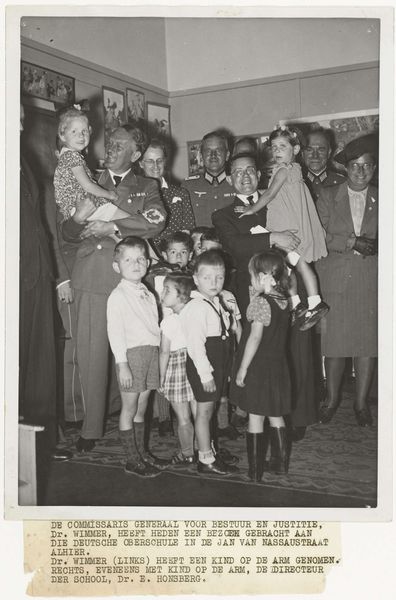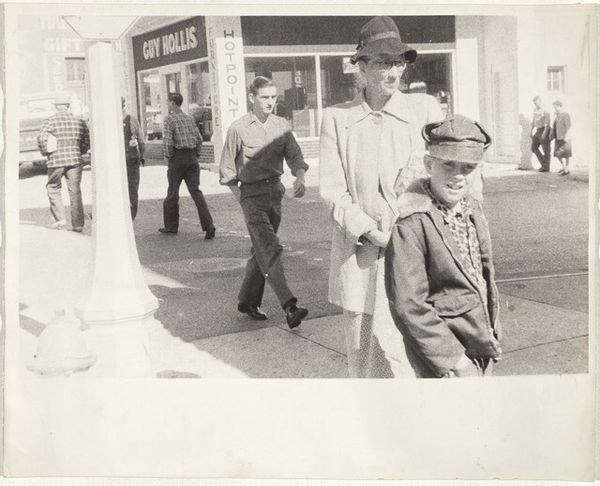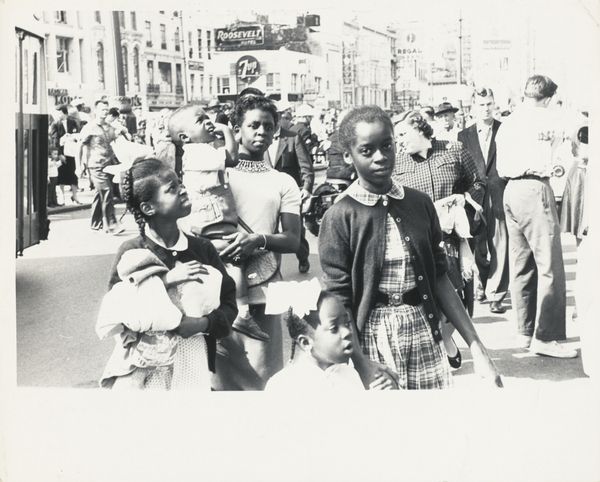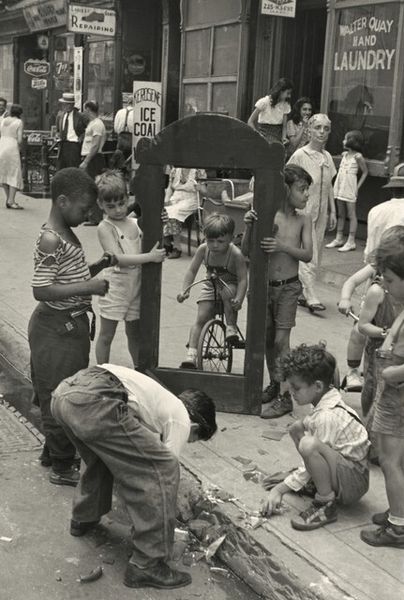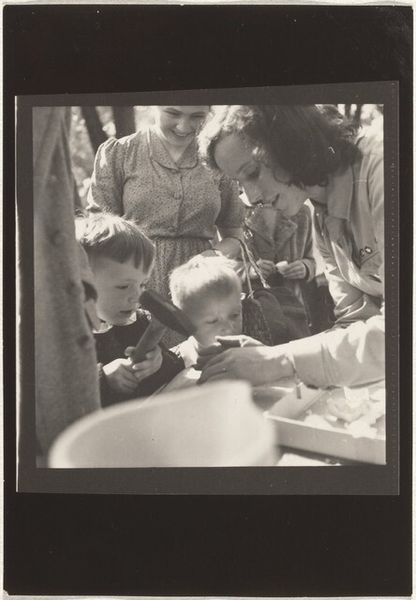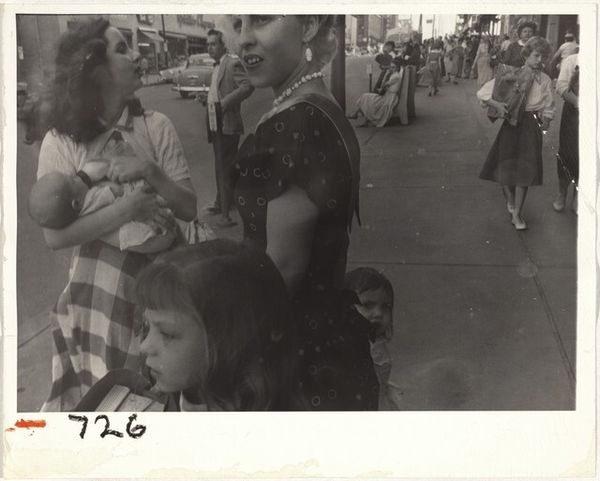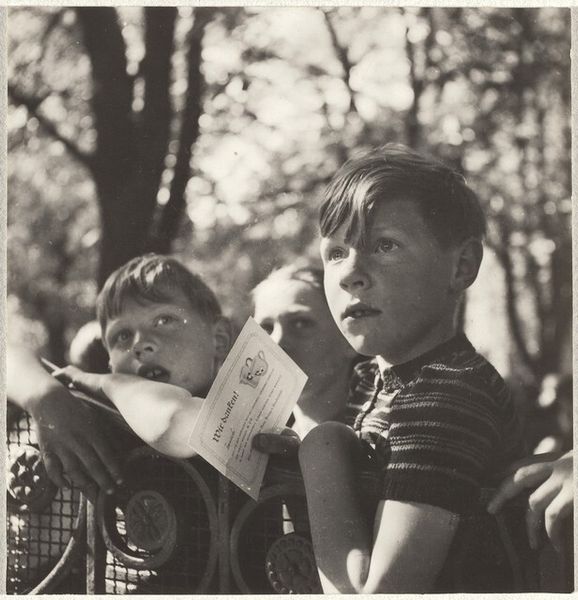
print, photography, gelatin-silver-print
#
portrait
#
print photography
# print
#
street-photography
#
photography
#
gelatin-silver-print
#
pop-art
#
modernism
#
realism
Dimensions: sheet: 25.3 x 20.3 cm (9 15/16 x 8 in.)
Copyright: National Gallery of Art: CC0 1.0
Curator: I'm struck by the slightly unnerving expressions on the children's faces in this gelatin silver print by Robert Frank, created in 1956. It's titled "Children in station--Chicago." The composition and stark monochrome create a sense of displacement, wouldn't you agree? Editor: Absolutely. The photograph carries the weight of social expectation, that feeling of constraint. What about the children triggers such a response? Curator: The girl in the middle seems to emanate resilience while the children flanking her, hold anxieties that might speak to immigration and displacement prevalent in post-war American culture. Editor: That's astute. Given the era, and Robert Frank’s known interest in the fringes of society, how do we interpret the meaning behind their seemingly formal attire? What could those carefully chosen outfits signify? Curator: The formal clothing juxtaposed with the backdrop of a bustling train station generates tension. It hints at assimilation perhaps, or a desire to present a polished image in the face of the unknown. Their symbolic clothing might serve as armor. Editor: Interesting. Also, the racial politics that run through Frank’s oeuvre and particularly the images in The Americans. Does their presentation play a role within that? Are we subconsciously framing them against the backdrop of Civil Rights-era imagery? Curator: It's impossible to separate the photograph from that historical context. The children almost become symbolic figures, reflecting the complex narratives of hope and uncertainty woven into the fabric of American society at that time. The image also gives us insight into their future within a segregated society. Editor: Exactly. It also brings to mind other photographic investigations into childhood vulnerability like Helen Levitt’s work during the same era. Curator: The beauty of Frank's work lies in its ability to tap into the collective unconscious and spark conversations. His compositions really act as visual mirrors reflecting not just the subject but also the culture of the time. Editor: Agreed. Frank’s work, especially this photograph, encourages us to probe beyond surface appearances, consider historical contexts, and understand the emotional weight embedded within images. Curator: Thank you for the dialogue! Editor: My pleasure, the insights shared have expanded my viewpoint.
Comments
No comments
Be the first to comment and join the conversation on the ultimate creative platform.
